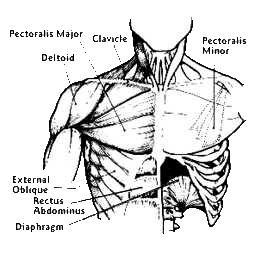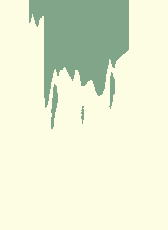About Oriental Bodywork
 I utilize several styles of Oriental bodywork; TUINA is the traditional system of Chinese style physical therapy or massage. SHIATSU is the traditional system of Japanese style physical therapy or massage. Both may be used in conjunction with Acupuncture or herbs to enhance treatments in a variety of musculo-skeletal conditions. Tuina and Shiatsu are perhaps the oldest form of Oriental medicine, predating Acupuncture. As practiced it is similar to other more familiar forms of bodywork (i.e. Swedish) but uses Acupressure points (Acupoints) and meridian based therapy. The practitioner works to open the flow of Qi in meridians as well as muscle groups. As such we could name this therapy “ACUPRESSURE” or “Medical Massage”, used for specific medical conditions (such as TMJ, sciatica), to relieve the body from its limitations induced by pain.
I utilize several styles of Oriental bodywork; TUINA is the traditional system of Chinese style physical therapy or massage. SHIATSU is the traditional system of Japanese style physical therapy or massage. Both may be used in conjunction with Acupuncture or herbs to enhance treatments in a variety of musculo-skeletal conditions. Tuina and Shiatsu are perhaps the oldest form of Oriental medicine, predating Acupuncture. As practiced it is similar to other more familiar forms of bodywork (i.e. Swedish) but uses Acupressure points (Acupoints) and meridian based therapy. The practitioner works to open the flow of Qi in meridians as well as muscle groups. As such we could name this therapy “ACUPRESSURE” or “Medical Massage”, used for specific medical conditions (such as TMJ, sciatica), to relieve the body from its limitations induced by pain.
How Do Tuina and Shiatsu Work?
 Acupressure works with the natural vital energy inherent within all living things to promote the body’s ability to heal itself. Acupressure is based on an energetic model rather than the biochemical model of western medicine. The ancient Chinese recognized a vital energy behind all life forms and life processes. They called this energy Qi (pronounced chee). This energy flows through the body in channels known as meridians that both nourishes our tissues and connects our major organs. According to Oriental medical theory, illness arises when the cyclical flow of Qi in a meridian becomes unbalanced or is blocked, much like a dam blocking a river, creating imbalance and pain. Stimulating Acupoints influences the meridians, unblocks obstructions, and helps reestablish the regular flow of Qi through the meridians.
Acupressure works with the natural vital energy inherent within all living things to promote the body’s ability to heal itself. Acupressure is based on an energetic model rather than the biochemical model of western medicine. The ancient Chinese recognized a vital energy behind all life forms and life processes. They called this energy Qi (pronounced chee). This energy flows through the body in channels known as meridians that both nourishes our tissues and connects our major organs. According to Oriental medical theory, illness arises when the cyclical flow of Qi in a meridian becomes unbalanced or is blocked, much like a dam blocking a river, creating imbalance and pain. Stimulating Acupoints influences the meridians, unblocks obstructions, and helps reestablish the regular flow of Qi through the meridians.
Acupoints are specific locations along the meridians. Each point has a predictable effect upon the vital energy (Qi) passing through it, altering various biochemical and physiological conditions in order to achieve the desired effect. Modern science has been able to measure the electrical charge at these points, thus confirming the meridians mapped by the ancients.
Acute syndromes might need two to three treatments per week while the general protocol for treatment of chronic syndromes is four to six weekly treatments. Once a patient realizes satisfactory results from treatment, they are encouraged to maintain a monthly maintenance schedule in order to stay in balance.
Additional Techniques Used In Oriental Bodywork
 Depending on patient preferences and indicated treatment protocols, Tuning Forks, Moxibustion, Cupping, Heat therapy, or Bodywork therapy and various other techniques may be applied to achieve longer-lasting results in a shorter amount of time. Individually-tailored granular herbal formulas may be suggested, and dietary/exercise recommendations suggested for daily maintenance between visits.
Depending on patient preferences and indicated treatment protocols, Tuning Forks, Moxibustion, Cupping, Heat therapy, or Bodywork therapy and various other techniques may be applied to achieve longer-lasting results in a shorter amount of time. Individually-tailored granular herbal formulas may be suggested, and dietary/exercise recommendations suggested for daily maintenance between visits.
Tuning Forks
This non-invasive treatment modality helps loosen tissue as well as activate Acupoints on the body. A form of sound therapy they are tuned to celestial vibrations, oscillating in harmony or disharmony with paired tuning forks. In harmony they tonify deficiencies (they tonify better than Acupuncture in some cases), in disharmony they loosen and dissipate excess (as with a tight neck muscle). They are particularly useful with sinuses and helping tonify deep, weak Acupoints.
Moxibustion
Moxibustion is a technique in which a Chinese herb called mugwort (also sage or artemesia vulgaris) is used to apply heat to an Acupuncture point. It is used to treat certain debilitating conditions as well as arthritis and pain. Moxa is usually rolled into a stick the size of a cigarette or cigar, lit, and held over specific areas of the body. Moxa can also be placed onto the handle of an Acupuncture needle, allowing deeper penetration of heat through the needle.
Cupping
Cupping is a technique where a glass cup is suctioned onto the body and allowed to sit for about ten minutes. This technique stimulates circulation, relieves swelling, and greatly enhances an Acupuncture. Cupping is used for many conditions including; back pain, shoulder pain, neck pain, common colds and influenza.
Heat Therapy
FIM (Far Infrared Mineral) TDP Mineral Lamps have been around for over 20 years. Originating in China, the TDP Lamp is called ‘Miracle Lamp’ because it does not give off any visible light and it has been widely used to treat over 100 chronic conditions. Natural and safe, FIM Therapy is recommended for relief of muscular pain, sore muscles, arthritis, bursitis, back ache, tennis elbow, joint pain, and related pains. TDP Mineral Lamps use a special plate coated with a mineral formation consisting of 33 elements, essential to the human body. These medical devices were awarded the Gold Medal in the 1986 at the Zagreb international Fair in Yugoslavia and in the December of same year it was awarded silver medal at the 35 Brussels Eureka World for Invention.
Bodywork Therapy
- Swedish: the most standard massage type, full body massage which involves firm, slow pressure to allow the body to de-stress and to relax. Used for maintenance or relaxation purposes.
- Deep Tissue: usually used for people who are experiencing “knots” and specific areas of pain to aid the body in breaking up these blockages and to allow better range of motion and use of affected areas – this may be a full body massage or modified to concentrate on specific areas.
- Rolf SI works on the body’s fascia to strengthen and align the body’s structure. You can read more about this unique therapy under “Rolfing” located in the sidebar to the left.


